Sunflower Ordnance Works: Sunflower Village Historic District
Introduction
Text-to-speech Audio
During World War II, the federal government built one of its many munitions plants near De Soto, Kansas. The government also built Sunflower Village to house workers and their families. At its peak, the munitions plant supported more than 12,000 employees while the town housed families in more than 900 units. The nearly self-sufficient community supported a newspaper, churches, stores, schools, and recreation centers. The plant and town continued to operate after World War II through the Vietnam War, but a rapid decline in orders by the federal government and deferred maintenance led to decline and the plant was placed into standby status in 1972. While research and production continued in the following decades, most of the 9,000-acre plant was vacant, as were many of the homes and apartments. With the increased value of neighboring real estate, several developers have made attempts to convert the property into everything from a theme park to building the area into a suburban community.
Images
Sunflower Village Ad
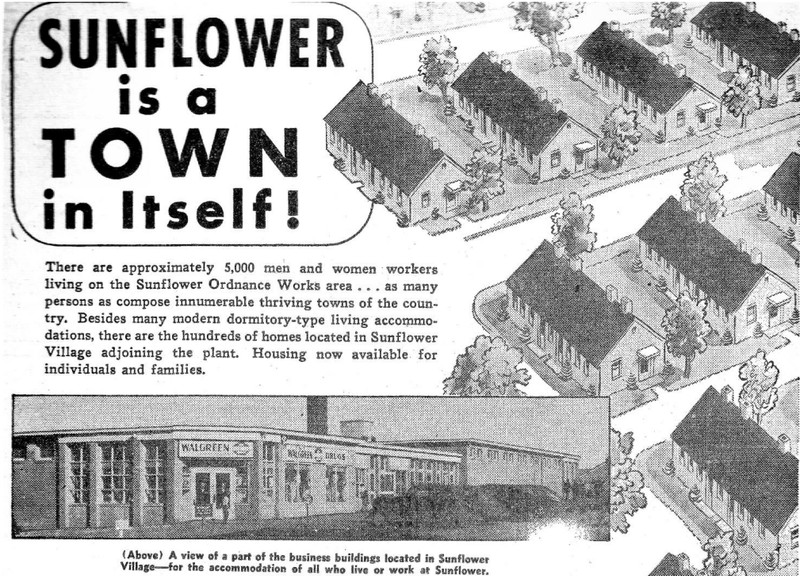
Sunflower Village, 1940s
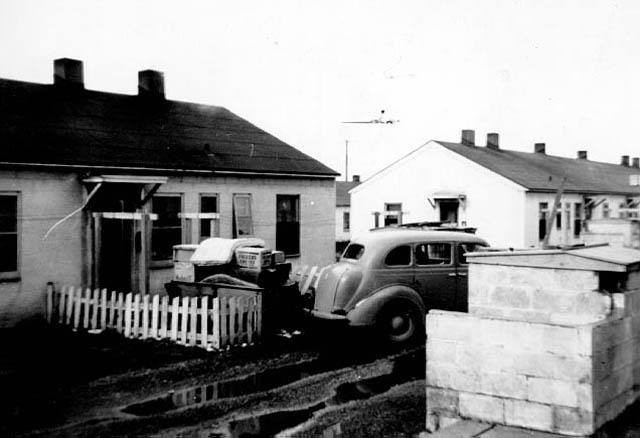
2014 photo of Sunflower Village, now known as Clearview City in De Soto, Kansas.
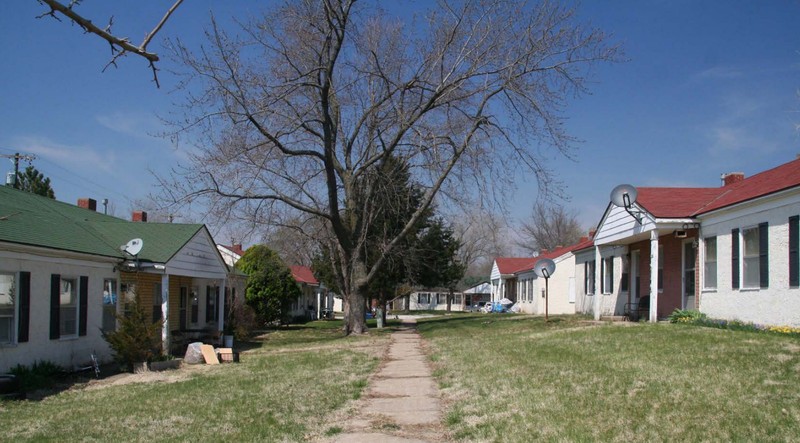
2014 photo of Sunflower Village, now known as Clearview City in De Soto, Kansas.
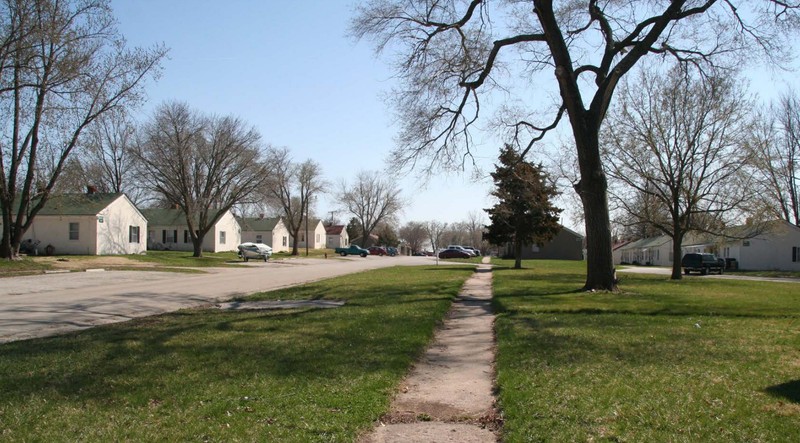
2014 photo of Sunflower Village, now known as Clearview City in De Soto, Kansas.
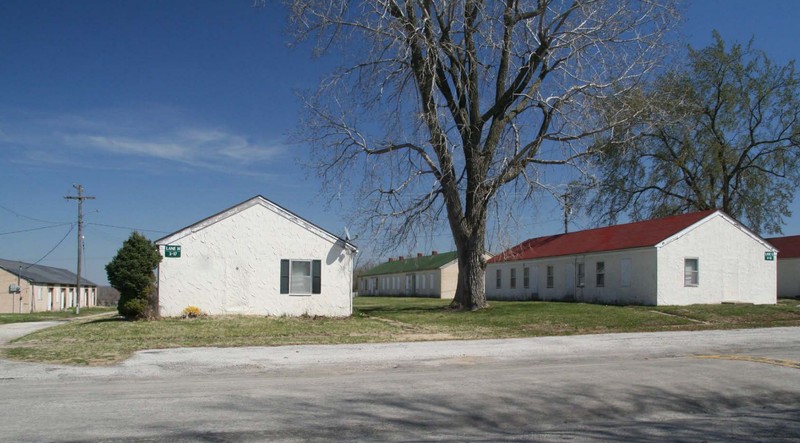
2014 photo of Sunflower Village, now known as Clearview City in De Soto, Kansas.
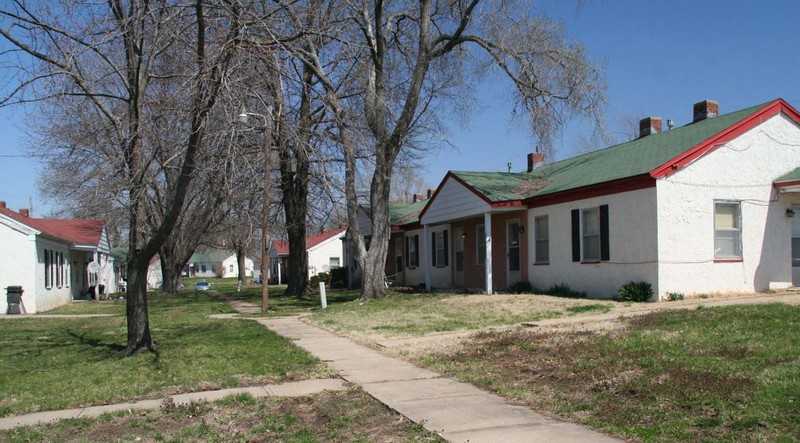
2014 photo of Sunflower Village, now known as Clearview City in De Soto, Kansas.
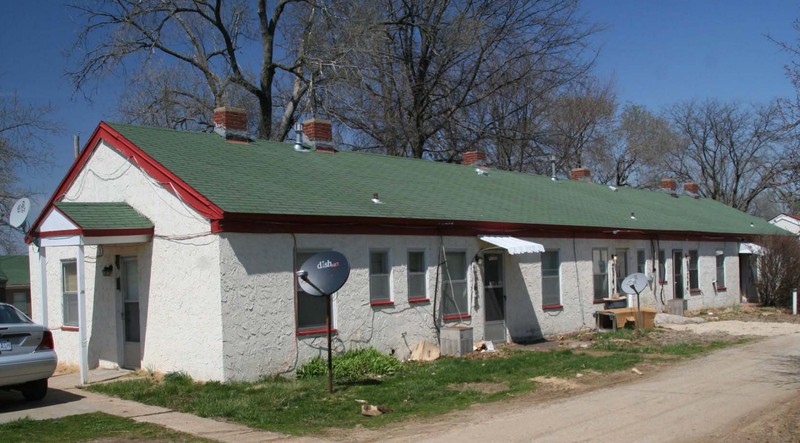
2014 photo of Sunflower Village, now known as Clearview City in De Soto, Kansas.
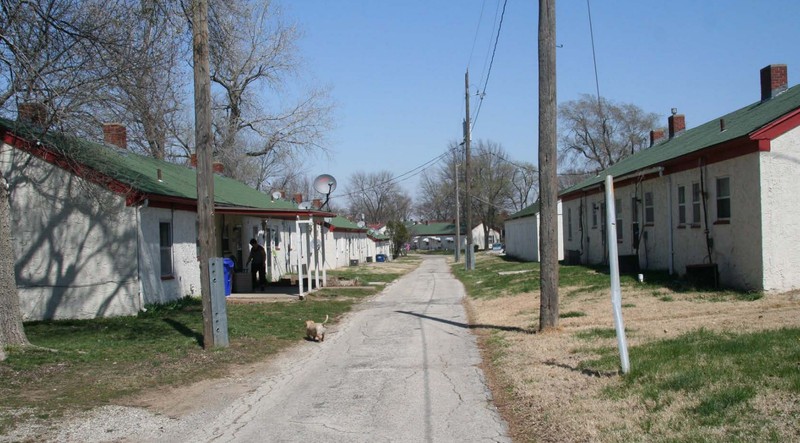
Backstory and Context
Text-to-speech Audio
During World War II, the federal government built Sunflower Village, Kansas, to house Sunflower Ordnance Works employees and their families. The plant produced munitions used in the war and the community housed workers via the federal government until 1959 when a private real-estate developer purchased the land and buildings. Sunflower Village evolved out of many urban-planning philosophies, including federal ownership, 'Garden City' communities, and private company towns. The nearly self-sufficient town supported its own newspaper, stores, schools, and churches. By the 1970s, Sunflower Village and plant had declined significantly in usage and population. De Soto annexed most of Sunflower Village and the plant, and city leaders have attempted many plans to redevelop the area which serves as a reminder of the government's efforts in World War II which included munitions plants.
Planners expected workers for Sunflower Village to commute from larger cities, such as Kansas City and Lawerence, or live in nearby smaller towns. But, a severe housing shortage occurred. Thus, by 1942, rows of trailers appeared in several cities, transportation options grew scares (overwhelmed), church membership exploded, and schools suffered from a scarcity of materials, teachers, space, and money. As a result, the government built nearly 100 units in Lawrence specifically for the workers and their families, and city officials zoned a two-block area specifically designed for trailers. But, a new town became necessary.
Initially planned as a temporary residential community, the government constructed Sunflower Village in 1943 (during World War II), consisting of 800 units on seventy-eight acres of land. Its design reflected the 'Garden City' movement, usually found in suburban developments at the time, an urban planning philosophy that sought to marry the best of urban and country characteristics. Still, the homes offered little aesthetic appeal, mainly comprised of concrete block exteriors. And, the interior offered few amenities. For instance, apartment unit cabinets had open shelves (no doors). Nevertheless, after four months of existence, residents occupied fifty hastily-made units, and the community supported a newspaper and church. Within a year, residents had access to a beauty shop and barbershop, recreation hall, drug store, grocery store, theater, bowling alley, and more. A second and third addition, as well as the construction of a grade school, proved necessary as demand for housing Sunflower Ordinance Works employees and their families grew significantly.
The Sunflower Ordinance Plant supported more than 12,000 employees at its peak during World War II. Following the war, the community served a second purpose — to house veterans attending school following their detachment from military service. Approximately one thousand male students of the University of Kansas occupied rented buildings during this new phase. A few years later, the reactivation of the plant occurred during the Korean War, which brought another spike in demand; the plant supported more than 5,000 employees. However, the plant workforce decreased significantly at the end of the Korean War, resulting in just 147 of the 977 units being occupied by late 1956. The downturn in demand brought about a massive sell-off of homes for low prices. As a result, roughly 600 frame units were liquidated; a private investor purchased the entire development in 1959.
By the 1960s and early 1970s, the plant supported efforts during the Vietnam War, but the plant and town showed signs of decline. The population of the Village reached 18,000 in 1960 but declined steadily to less than 4,500 by the late 1970s. With its aging utilitarian housing and declining ancillary businesses, the community grew less attractive to buyers. As a result, by the early 1970s, Sunflower Village abounded in crime and poverty. In 1973, a new developer purchased the community, renamed it "Clearview City, and then spent $1.5 million (1975 dollars) on repairing and renovating the community's homes. Still, the population declined significantly. In 1998, De Soto annexed Clearview City, which boosted the city's population by a mere 339 people.
Meanwhile, plans have arisen over the years to transform the former ammunition plant into everything from a research park to a Wizard of Oz theme park. The latest move to remake the land arrived in 2021 when De Soto annexed two-thirds of the plant's old 9,000-acre property and, with help from a tax increment, sought to prepare the land for new development while supporting environmental cleanup of the former plant.
Sources
Friestad, Thomas and Nicole Dolan. "De Soto Primes for Massive (but not Explosive) Growth." Kansas City Business Journal. bizjournals.com. January 21, 2022. https://www.bizjournals.com/kansascity/news/2022/01/21/de-soto-sunflower-ammuntion-plant-future.html.
Howard, Ebenezer. Garden cities of tomorrow. London: Swan Sonnenschein & Co., 1902.
Post, Chris. "Modifying sense of place in a federal company town; Sunflower Village, Kansas, 1942 to 1959." Journal of Cultural Geography 25, no. 2 (2008): 137-159.
Spencer, Brenda and Michelle Spencer. "Registration Form: Sunflower Village Historic District." National Register of Historic Places. nps.gov. 2014. https://npgallery.nps.gov/GetAsset/3c26f9d7-ce1b-4d79-b5fd-70d201db9b61.
"Sunflower Village Historic District (1943)." Johnson County Museum. Accessed March 14, 2022. https://www.jcprd.com/DocumentCenter/View/12079/Sunflower-Historic-District---De-Soto.
nps.gov. https://npgallery.nps.gov/GetAsset/3c26f9d7-ce1b-4d79-b5fd-70d201db9b61
Kansas State Historical Preservation Office, via Facebook: https://www.facebook.com/photo/?fbid=351165598366271&set=sunflower-village-historic-district-desoto-johnson-co
nps.gov. https://npgallery.nps.gov/GetAsset/3c26f9d7-ce1b-4d79-b5fd-70d201db9b61
nps.gov. https://npgallery.nps.gov/GetAsset/3c26f9d7-ce1b-4d79-b5fd-70d201db9b61
nps.gov. https://npgallery.nps.gov/GetAsset/3c26f9d7-ce1b-4d79-b5fd-70d201db9b61
nps.gov. https://npgallery.nps.gov/GetAsset/3c26f9d7-ce1b-4d79-b5fd-70d201db9b61
nps.gov. https://npgallery.nps.gov/GetAsset/3c26f9d7-ce1b-4d79-b5fd-70d201db9b61
nps.gov. https://npgallery.nps.gov/GetAsset/3c26f9d7-ce1b-4d79-b5fd-70d201db9b61
